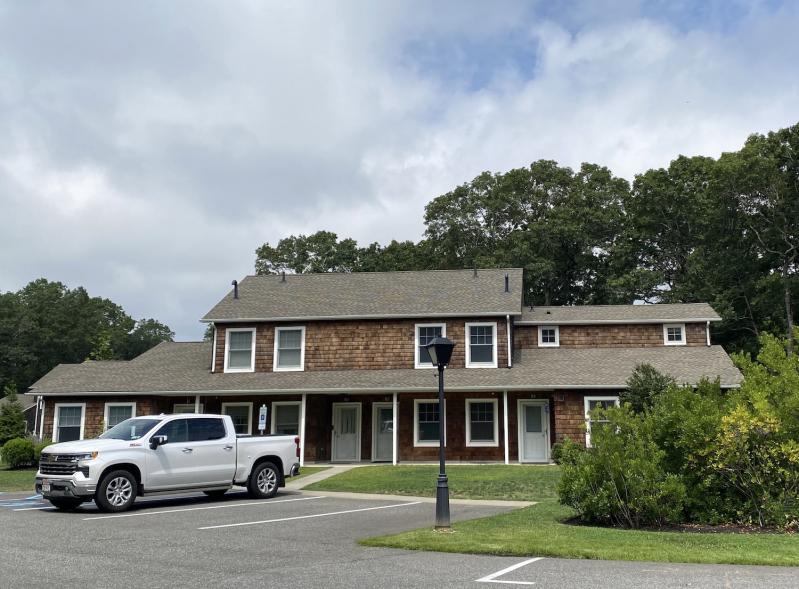The East Hampton Town Board discussed draft legislation that would allow affordable multi-unit residences on lots as small as a half-acre on Tuesday, five months after an initial discussion and following a June Planning Department presentation to the planning board on the proposed new use and that board’s subsequent comments.
The latest proposal would allow private property owners to convert an existing single-family residence to a multiple-family residence, or build a new multiple-family residence. The intention is that individual units, in one or more buildings, would be rented by the property owner to residents, defined as those living or working in the town. A nonresident who has been a resident within the past five years would be considered a resident, matching the definition under the town’s Community Housing Fund law.
The proposal represents the town’s latest initiative to alleviate an acute shortage of affordable housing here, as lifelong residents find the cost of housing untenable and businesses struggle to retain staff to accommodate the all-important tourist season.
The affordable housing overlay district’s present three-acre specification is seen as too limiting to effect a meaningful increase in the creation of affordable housing. The proposal by Eric Schantz, a principal planner for the town, envisions “a type of mini-affordable housing development,” privately owned and containing rental apartments, restricted to A.H.O. districts and at a density of four units per acre, or two per half-acre.
A special permit from the planning board would be required, along with an annual permit from the Office of Housing and Community Development. Tenants would have to be residents of the town and would be subject to an income restriction of 130 percent of the area median income in Suffolk County, now $150,150 for an individual and $171,600 for a couple, up to $248,690 for a six-person household.
On Tuesday, Mr. Schantz summarized the planning board’s comments on the proposal. The new use would have little applicability if additional parcels or areas are not designated affordable housing overlay districts, he said. The planning board suggested provisions that would allow a tenant to remain in a unit if their income should increase to a point where they would not be otherwise eligible. One planning board member wondered if the current limit of 130 percent of area median income for moderate-income families was high enough.
The planning board also discussed whether or not higher green energy standards should be enforced and if solar or other similar provisions should be required. Its primary concern, though, was that the use would not ultimately provide long-term housing to year-round, income-qualifying residents, but instead would be financially feasible only for businesses looking to house seasonal workers.
To the latter point, “You need to create this use first to determine whether or not it is going to be feasible,” Mr. Schantz said. “The town board has full control over what parcels would be eligible for this use, how many parcels would be eligible, and where they would be. We envision this being a selected number of parcels near the periphery of downtowns.”
Only “a handful” of parcels of fewer than three acres are at present zoned A.H.O. “We previously identified that there’s really only one that’s feasible for any future development, which is in downtown Montauk,” Mr. Schantz said. A second part of the process, he said, is the town board looking at appropriate areas to extend the A.H.O. Multifamily residential zoning around downtown areas, he told the board, “can be a very useful tool” and is part of “common-sense modern planning.”
The planning board’s comments reflect genuine concerns, said Councilman Ian Calder-Piedmonte, the town board’s liaison to the Office of Housing and Community Development. The issue is complicated, he said, and “it’s important that we don’t let the perfect be the enemy of the good. . . . This would allow for smaller parcels to be included and added to affordable housing stock.”
Multiple A.H.O. designations were removed from the town code in the 2005 comprehensive plan, Councilman David Lys said. “We’re in the situation here that we will probably have to do this individually instead, until we change the comp plan.”
The median income of the area, said Councilman Tom Flight, “is so clouded by second-home ownership” that salaries do not typically align with housing costs. At first glance, he said, “I would like to see that threshold be slightly higher, potentially higher than 130 percent.”
But that could affect eligibility for funding from other levels of government, Mr. Schantz said. “You’re not prohibited from setting the standard higher, but once you do, if you need partnership or funding from other entities, it becomes increasingly difficult to justify that.”
Councilwoman Cate Rogers worried that those with lower incomes would consequently be left out. “We talk about teachers and police officers as a model, but what about support staff? . . . I am concerned that we’re not providing housing for a large number of people that desperately need it, that don’t make these kinds of numbers but are essential to the businesses and the municipality and all the other services that the town provides.”
The board disagreed on mandating renewable energy, such as all-electric appliances and rooftop solar panels. “At a certain point, I think it would become an impediment toward our main goal here,” Mr. Calder-Piedmonte said. “If we make that a requirement, is that a reason in one, two, 10 cases that affordable housing doesn’t get constructed, because that part of it didn’t work? . . . I think we can overregulate to make things too complicated and impede the process.”
Ms. Rogers, who is chairwoman of the town’s sustainability committee, recommended that sustainable landscaping, with no fertilizer or irrigation use, be required at a minimum. “I would like to see the projects be at least solar-ready,” she added, meaning buildings should be constructed so it is easier to install solar panels later.
“Where possible,” Mr. Flight said, “I would like to see green energy provisions, but I think we have to be very careful that that does not impact the deliverability” of affordable multi-unit housing. “I’d prefer solar-ready, but not mandate [that] solar has to be on top.”
“My vote would be for all-electric and solar-ready,” Supervisor Kathee Burke-Gonzalez said.
The planning board’s last point was “the biggest one,” Mr. Calder-Piedmonte said. “Why would anybody do this? They’re not going to make as much money as they possibly can make, that’s true, but we can’t both maximize somebody’s profits in a business endeavor and also keep rents affordable.” The proposal, he said, is “a reasonable business opportunity, not the most profitable one you can do in the Hamptons, but I hope that there’s people out there who recognize this is a need and want to construct affordable housing.”
He suggested that the minimum size of an apartment be reduced from the present proposal of 400 square feet to 300, “in the interest of being able to provide as many as possible.” His colleagues agreed.
Mr. Schantz said he would work on draft revisions. “We’ve got the draft of very good code that I think we should take to public hearing and hopefully adopt soon.”
__
Correction: An earlier version of this article identified Eric Schantz by his former title with the town. He is a principal planner and not the town's director of housing.




